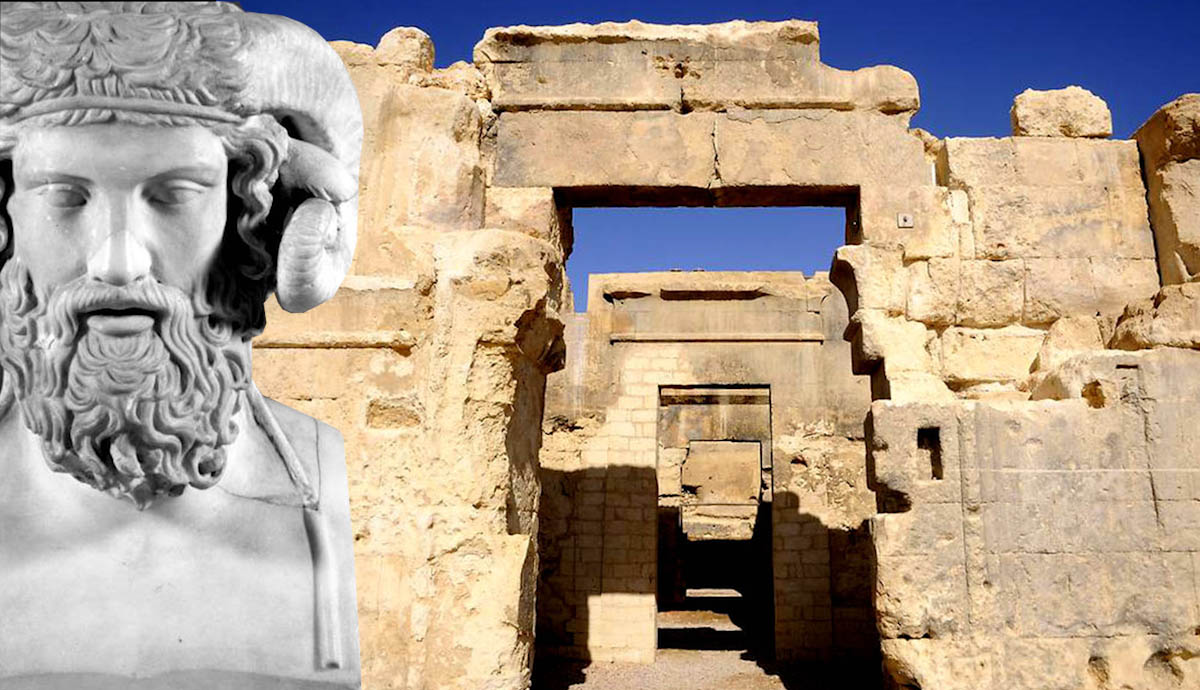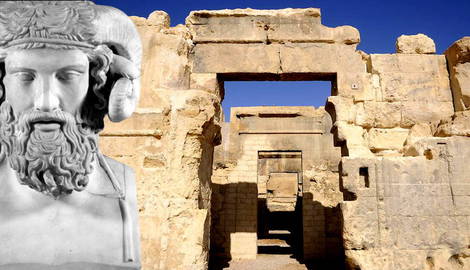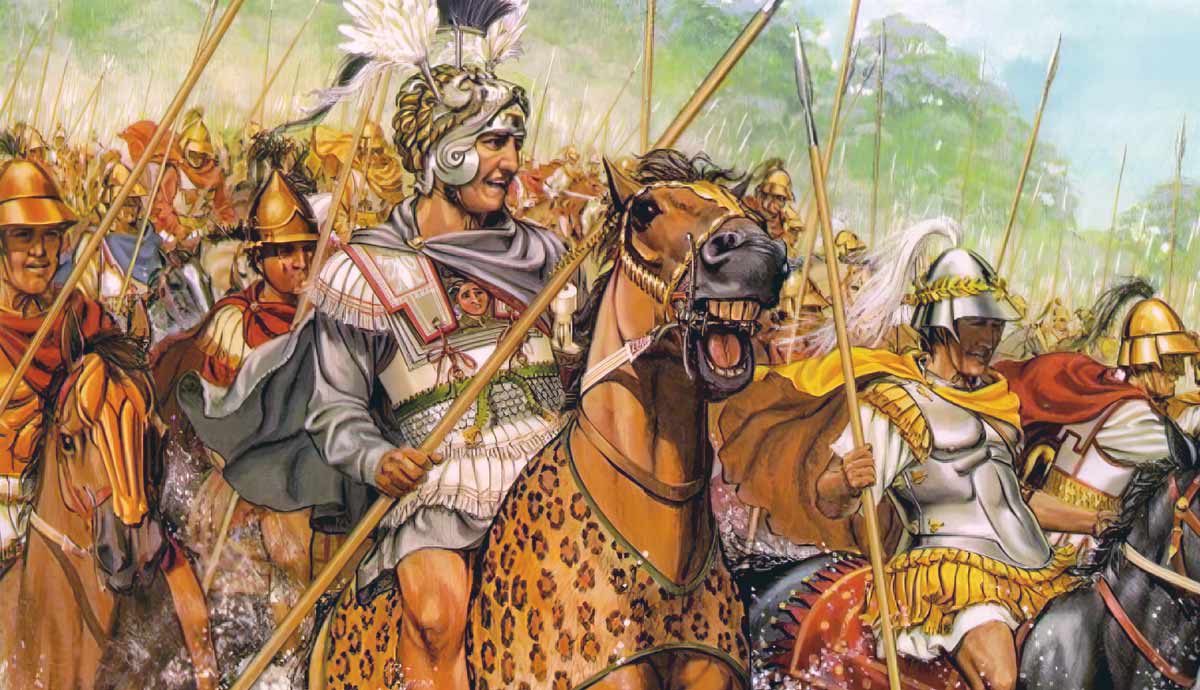
When Alexander the Great invaded Egypt he was already a hero and conqueror. Yet, during his short time in Egypt, he experienced something which appears to have deeply influenced him for the rest of his life. This event, the exact nature of which is shrouded in legend, occurred when Alexander the Great visited the Oracle at Siwa. At that time the Oracle at Siwa was one of the most famed oracles in the Eastern Mediterranean. Here, Alexander the Great transcended the realm of man and became if not a god, then the son of one.
Alexander the Great Invades Egypt

In 334 BCE, Alexander the Great crossed the Hellespont and began his invasion of the mighty Persian Empire. Following two great battles and several sieges, Alexander the Great had taken over most of Persia’s territory in Anatolia, Syria, and the Levant. Rather than pushing eastwards into the heart of the Persian Empire, he instead marched his army south into Egypt. The conquest of Egypt was necessary for Alexander the Great to secure his lines of communication. Persia still possessed a powerful navy which could threaten Greece and Macedonia, so Alexander needed to destroy all its bases. Egypt was also a wealthy land and Alexander needed money. It was also necessary to ensure that a rival would not seize Egypt and attack Alexander’s territory.
The Egyptians had long resented Persian rule, so they greeted Alexander as a liberator and made no notable attempts at resistance. During his time in Egypt, Alexander the Great sought to establish his rule in a pattern that would repeat itself across the Ancient Near East. He reformed the tax code along Greek lines, organized the military forces to occupy the land, founded the city of Alexandria, restored temples to the Egyptian gods, dedicated new temples, and offered the traditional pharaonic sacrifices. Seeking to further legitimize his rule and follow in the footsteps of the heroes and conquerors of the past, Alexander the Great also decided to visit the Oracle at Siwa.
History of the Oracle at Siwa

The Oracle at Siwa was located in a deep depression known as the Siwa oasis which is located in an isolated part of the desert towards the northwestern border with Libya. Until the domestication of the camel, Siwa was too isolated to be fully incorporated with Egypt. The first signs of an Egyptian presence date to the 19th Dynasty when a fort was constructed at the oasis. During the 26th Dynasty, the Pharaoh Amasis (r. 570-526 BCE) built a shrine to Amun at the oasis to assert Egyptian control and win the favor of the Libyan tribes more fully. Amun was one of the chief Egyptian gods, who was worshipped as the king of the gods. The temple shows little Egyptian architectural influence, however, perhaps indicating that the religious practices were only superficially Egyptianized.
The first Greek visitors to the Oracle at Siwa were travelers on the caravan routes from Cyrenaica in the late 6th century. Quite impressed with what they found, the fame of the oracle soon spread throughout the Greek world. The Greeks equated Amun with Zeus and called the god worshipped at Siwa Ammon-Zeus. The Lydian king Croesus (r. 560-546 BCE), and ally of the Pharaoh Amasis, had sacrifices offered at the Oracle at Siwa on his behalf, while Greek poet Pindar (c. 522-445 BCE) dedicated an ode and a statue to the god and the Athenian commander Cimon (c. 510-450 BCE) sought its guidance. The Greeks also incorporated the Oracle at Siwa into their legends claiming that the temple had been founded by Dionysus, visited by both Herakles and Perseus, and that the first sibyl of the temple was the sister of the sibyl at the temple at Dodona in Greece.
Seeking the Oracle at Siwa

Alexander the Great’s motivations for seeking out the Oracle at Siwa were likely twofold. He wanted to legitimize his rule in the eyes of the Egyptians by acting like a Pharaoh and hoped that the Oracle at Siwa would declare he was descended from a pharaonic line. It is also probable that because the Oracle at Siwa was located on the border of Egypt he was hoping a demonstration by his forces would secure the good behavior of the Libyans and Greeks of Cyrenaica. Some of the sources suggest that an additional motivation was a desire to emulate the great conquerors and heroes of the past who had also visited the shrine.
Accompanied by at least part of his army, Alexander the Great set off for the Oracle at Siwa. According to some of the sources he was aided in his march by divine intervention. Copious amounts of rain fell slaking their thirst and they were guided by two snakes or ravens after the way was lost. Such help was necessary for the ancient sources also say that when the Persian king Cambyses (r. 530-522 BCE) sent an army to destroy the Oracle at Siwa all 50,000 men were swallowed by the desert. However, with clear evidence of divine aid, Alexander the Great and his army were able to arrive safely at the shrine of the Oracle at Siwa.
The “Oracle” at Siwa

The sources agree that Alexander the Great was struck by the beauty of the oasis and the shrine of the Oracle at Siwa. They do not completely agree about what exactly happened next. There are three major sources for the life of Alexander the Great, which were written by Arrian (c. 86-160 CE), Plutarch (46-119 CE), and Quintus Curtius Rufus (c. 1st Century CE). Of these three, the account of Arrian is generally considered to be the most reliable as he drew almost directly from the writings of Alexander the Great’s generals. According to Arrian, Alexander the Great consulted the Oracle at Siwa and received a satisfactory reply. Arrian does not relate what was asked or the answer Alexander the Great received.
Plutarch has far more to say but was a moralizing philosopher rather than simply a historian. In his account, the priest greeted Alexander the Great as the son of Zeus-Ammon and informed him that the empire of the world had been reserved for him and that all of Philip of Macedon’s murders had been punished. Another version is provided by Quintus Curtius Rufus, a Roman whose work is often considered rather problematic. In his version, the priest of Ammon greeted Alexander the Great as the son of Ammon. Alexander replied that his human form had made him forgetful of this and inquired about his dominion over the world and the fate of Philip of Macedon’s murderers. Quintus Curtius Rufus also says that Alexander’s companions asked whether it would be acceptable for them to offer divine honors to Alexander and received an affirmative answer.
Possible Interpretations of the Oracle at Siwa

The exact nature of the exchange between Alexander the Great and the priest at the Oracle at Siwa has been debated for centuries. During Antiquity, many were willing to accept the idea that Alexander the Great was either the son of Zeus-Ammon or a god in his own right. However, there were many doubters as well. Plutarch reports in the same passage the claim that the priest made a linguistic slip up while attempting to talk to Alexander in Greek. Instead of addressing him as “O Paidios,” the priest fumbled the pronunciation and instead said “O Paidion.” So rather than addressing Alexander the Great as a son of Zeus-Ammon the priest addressed him as THE SON of Zeus-Ammon.
Modern interpretations of the exchange between Alexander the Great and the priest at the Oracle at Siwa have focused on cultural differences. For the Greeks, it was unheard of for a king to claim to be a god or the son of a god, though some might claim such an ancestor from earlier generations. In Egypt, however, it was quite common for Pharaohs to be addressed this way so Alexander the Great and the Macedonians may have just misunderstood. It is also possible that the priest was trying to flatter the Macedonian conqueror and secure his favor. Telling Alexander the Great he was destined to conquer the world and that all of Philip of Macedon’s murders had been brought to justice was a very wise and very politically expedient statement.
Alexander and Zeus-Ammon

Much has been made of Alexander the Great’s visit to the Oracle at Siwa both during Antiquity and the modern era. After visiting the Oracle at Siwa, Alexander the Great was portrayed on coins with the horns of a ram coming from his head. This was a symbol of the god Zeus-Ammon and would have been understood as Alexander advertising his divinity. It would have also been good politics as it would have helped legitimize his reign as a foreigner of Egypt and other territories in the Near East. Images of rulers as gods or with the characteristics of gods were far more common in these parts of the world.
There was also a dark side that many ancient authors hinted at in their writings. As Alexander the Great’s conquests took him further and further afield his Companions noted a shift in behavior. Alexander the Great grew more unpredictable and despotic. Many saw signs of megalomania and paranoia. He also began to demand that the members of his court perform the act of proskynesis when they came before him. This was an act of reverential greeting in which one lowered themselves on the ground to kiss the feet or arms of a respected person. For the Greeks and Macedonians, such an act was reserved for the gods. Alexander the Great’s behavior strained the relationship between him and his Companions to the breaking point. While this might not have been a direct result of the exchange at the Oracle at Siwa, whatever was said undoubtedly did contribute and probably encouraged some ideas and behaviors which Alexander the Great was already inclined towards.
The Oracle at Siwa after Alexander the Great

Despite its association with Alexander the Great, the Oracle at Siwa did not exactly thrive after the conqueror’s death. It remained important during the Hellenistic period and is said to have been visited by Hannibal and the Roman Cato the Younger. However, when the Roman traveler and geographer Strabo visited sometime around 23 BCE, the Oracle at Siwa was in clear decline. Unlike the Greeks and other Near Eastern cultures, the Romans relied on auguries and the reading of animal entrails to learn the will of the gods. The latest inscriptions at the shrine date to the time of Trajan (98-117 CE) and there appears to have been a Roman fort built in the area. So, for a time Rome’s emperors still honored the site for its cultural significance. After Trajan, the site continued to decline in importance and the shrine was largely abandoned. Amun or Zeus-Ammon was still worshipped at Siwa for many centuries and the evidence of Christianity is uncertain. In 708 CE the people of Siwa successfully resisted an Islamic army and did not convert to Islam until the 12th century; at which point all worship of Amun, or Zeus-Ammon presumably ended.
Today there are many ruins to be found in the Siwa oasis, spanning much of the region’s history. Only two sites can, however, be directly tied to the worship of Amun or Zeus-Ammon. These are the Temple of the Oracle and the Temple of Umm Ebeida. The Temple of the Oracle is fairly well preserved though there are reports that the rock precipice on which it sits is becoming increasingly unstable. Architecturally the Temple of the Oracle has Libyan, Egyptian, and Greek elements. At the moment archaeological exploration of the Temple of the Oracle has been extremely limited. However, there is some evidence that suggests Alexander the Great’s body might have been taken to Siwa after his death, but this is one of the many theories. Perhaps, then, the Oracle at Siwa was not too far off the mark when it declared Alexander the Great its own.










